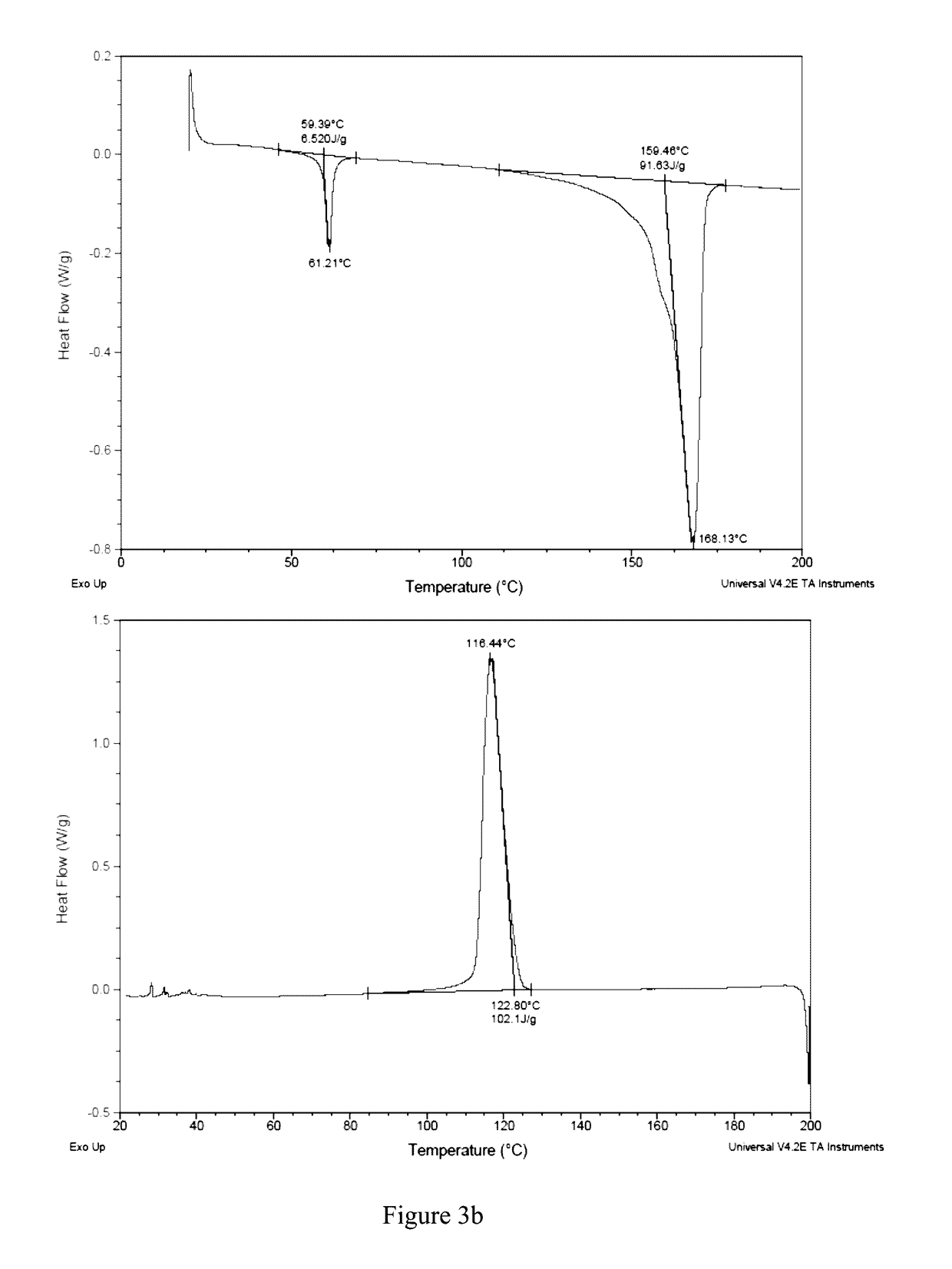Built-in antimicrobial plastic resins and methods for making the same
a plastic resin and antimicrobial technology, applied in the field of antimicrobial plastic resins and the methods for making the same, can solve the problems of unsatisfactory manufacturers considering the new capital investment, unperishable surface protection from bacterial attachment, and inability to achieve the mechanism of action for microbial prevention, and achieve strong thermal chemical stability
- Summary
- Abstract
- Description
- Claims
- Application Information
AI Technical Summary
Benefits of technology
Problems solved by technology
Method used
Image
Examples
embodiment 1
[0038]In this embodiment, therefore, poly(ethylene glycol) (PEG) was selected as the antifouling reagent to render the modified base polymers' bacterial repelling property. The masterbatches of PEG derivatives were introduced to the commercially available resins: polypropylenes (PP), polyethylenes (PE) and polycarbonates (PC). PP and PE demonstrate low melt processing temperatures while PC demonstrates high melt processing temperature.
[0039]1.1 Wet synthesis of PEG-Bearing Styrene-Maleic Anhydride Copolymer (SMA-PEG) as Masterbatch.
[0040]SMA-PEG was prepared by grafting PEG 10,000 (Tianjin Kermel) onto the backbone of styrene-maleic anhydride (SMA) copolymer (Sigma-Aldrich, Catalog no. 442399) in acetone. In other words, 100 g of PEG 10,000 was first dissolved in 500 mL of boiling acetone to give a 20 wt % PEG solution. 3.2 g of SMA was subsequently dissolved in the PEG solution and the reaction mixture was stirred under reflux overnight. The reaction was quenched in hexane to give ...
embodiment 2
[0052]2.1 Wet Synthesis of PEG-Bearing Maleated Polypropylene (PP-MA-PEG) as Masterbatch
[0053]PP-MA-PEG was prepared by wet chemistry via grafting of PEG 2000 (Tianjin Kermel) onto maleated polypropylene (PP-MA) (Sigma-Aldrich, Catalog no. 427845) with a weight average and number average molecular weight of 9100 and 3900, respectively, under reflux in toluene. 10 g of PP-MA was first dissolved into 200 mL of boiling toluene to give a 5 wt % solution of PP-MA. 20 g of PEG 2000 was added into the PP-MA solution. The reaction mixture was refluxed overnight and quenched in hexane to give product as a white precipitate. The precipitate was filtered to remove unreacted PEG and finally dried at room temperature in vacuum. The reaction scheme is demonstrated in Equation 2.
[0054]FIG. 5 shows the ATR-FTIR spectrum of PP-MA-PEG sample. A strong peak emerged at 1115 cm−1, corresponding to the C—O stretching mode due to the ether (—O—CH2—) linkage in PEG. On the other hand, the band typical of t...
embodiment 3
[0058]3.1 Extrusion of PEG-Modified Maleated Olefin Bearing Polypropylene (PP / PP-MA-C / PEG) as Masterbatch
[0059]PP / PP-MA-C / PEG was prepared by reactively extruding a dry blend mixture of three solid resin components: (1) PP (Total Petrochemicals Lumicene® MR10MX0), a random olefin copolymer; (2) PP-MA-C (Dow® Amplify™ GR 216), a maleic anhydride-grafted olefin plastomer and (3) PEG 10,000 (Tianjin Kermel). Prior to extrusion, 50 g of PEG 10,000 powders were pre-mixed together with 100 g of PP-MA-C pellets and 900 g of PP granules on the drum mixer. The dry blend mixture was fed into the twin-screw extruder from the front hopper. The barrel temperatures beginning from the front to the rear were 170° C., 180° C., 180° C., 180° C., 180° C., 180° C., 180° C. and 170° C. The feed frequency was 2 Hz while the speed of the screw was 150 rpm. The extrudate was cooled down in a water bath forming a solid filament and finally pelletized with a pelletizer. The pelletized resins were dried in a ...
PUM
| Property | Measurement | Unit |
|---|---|---|
| temperature | aaaaa | aaaaa |
| wt % | aaaaa | aaaaa |
| nozzle diameter | aaaaa | aaaaa |
Abstract
Description
Claims
Application Information
 Login to View More
Login to View More - R&D
- Intellectual Property
- Life Sciences
- Materials
- Tech Scout
- Unparalleled Data Quality
- Higher Quality Content
- 60% Fewer Hallucinations
Browse by: Latest US Patents, China's latest patents, Technical Efficacy Thesaurus, Application Domain, Technology Topic, Popular Technical Reports.
© 2025 PatSnap. All rights reserved.Legal|Privacy policy|Modern Slavery Act Transparency Statement|Sitemap|About US| Contact US: help@patsnap.com



